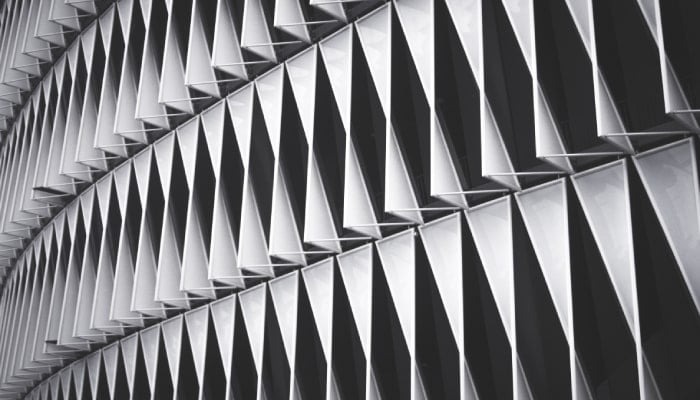Architecture is a dynamic field, with each day presenting a new opportunity to reshape the world. When you are designing a new structure, you navigate a landscape rich with potential, crafting spaces that blend aesthetics, functionality, and innovation. Your challenge is to source inspiration that speaks to both the present and future, distilling it into architectural design ideas that resonate with the people who will live there, work there, or just visit. The goal is for you to balance the practical with the inspirational, creating designs that are as user-friendly as they are striking. Simplicity and clarity are your guides, so you can make sure your concepts are both understood and appreciated. Your designs enhance lives and communities. Approach your next project with this mindset, and watch as your architectural designs become landmarks of ingenuity.
Finding Your Muse in Architecture
The quest for inspiration in architecture is as much about discovery as it is about creation. In your role, you’re not just a builder of structures but a curator of ideas, each with the potential to unfold into a groundbreaking project. The world around you is brimming with cues, patterns, and forms that can fuel your next big idea. Let’s explore the avenues that can lead to that flash of brilliance, guiding you to mold the familiar into something distinctly novel.
- Nature: Observe the organic forms, the efficiency of space in a honeycomb, or the resilience of vines embracing a trellis.
- Art Movements: Study the principles of balance in Renaissance art or the disruptive perspectives of Cubism.
- Historical Architecture: Reflect on the timeless functionality of ancient aqueducts or the enduring beauty of Gothic cathedrals.
- Cultural Textures: Draw from the diverse tapestry of cultural designs that infuse functionality with local storytelling.
- Technological Advances: Consider how new materials and methods, like durable FRP, can be integrated into modern designs.
- Sustainable Practices: Look into eco-friendly designs that harmonize with the environment, reducing footprints while maximizing utility.
- Urban Dynamics: Examine how the flow of city life can be supported by innovative architectural layouts and features.
As you weave these threads into your architectural vision, remember that inspiration coupled with practical innovation leads to designs that are both meaningful and utilitarian. Your next design could be the one to inspire a future generation of architects. Approach each project with an open mind, and let your creative process be as limitless as the skyline itself.
The Pulse of Current Architectural Trends
The architectural world today is an arena of innovation where diversity in design meets the latest in material technology. Trends are constantly evolving because of the collective push toward construction that is more sustainable, functional, and uniquely aesthetic. One noticeable shift has been the rising use of FRP panels. Trends like these are really pointing to the reimagining of what our spaces can become.
Sustainability and Eco-Friendly Design
Sustainability is now at the forefront of architectural innovation. FRP panels fit into this trend through their energy-efficient properties that help create buildings that are less taxing on resources and actually enhance living environments. Their contribution to energy savings and lower environmental impact exemplifies the shift toward more responsible design practices.
Indoor-Outdoor Connectivity
The distinction between indoor and outdoor spaces is becoming increasingly fluid. In this context, FRP panels are invaluable, as they are adept at enduring external conditions while contributing to aesthetic continuity. They enable architects to design spaces that merge the best of both worlds—durability and beauty with the practicality of indoor-outdoor living.
Adaptive Reuse and Flexibility
Transforming existing structures for new uses highlights both creativity and sustainability. Here, FRP’s adaptability shines, offering a lightweight yet robust solution for retrofitting and repurposing buildings. Its ease of installation and structural integrity makes it ideal for projects that breathe new life into old spaces.
Technological Integration
As buildings get smarter, the materials used in them must follow suit. FRP panels facilitate the seamless integration of technology into architecture, supporting the construction of spaces that are not only intelligent but also efficient. This trend underscores the growing synergy between material science and digital innovations in creating future-ready buildings.
By incorporating high-quality building elements, architects and builders are laying the groundwork for a future where architecture embraces environmental stewardship and technological integration. The possibilities for what you can achieve with FRP panels and a visionary approach to design are boundless, promising a future where our built environment reflects our highest aspirations for sustainability, functionality, and beauty.
Blueprint for Innovation
As you start to bring your vision to life, taking a methodical approach will make sure that your design not only meets but exceeds expectations. Here’s how you can start planning with precision and insight:
- Define Objectives: First, you are going to want to start by outlining the project’s goals. Think about the function of the space, who will use it, and what their needs might be. Clarity here sets the direction for the entire project.
- Research and Inspiration: Dive into research on current trends, sustainable practices, and innovative materials. For instance, exploring the benefits of high-quality building elements can reveal how FRP panels elevate your design through durability and versatility.
- Community Engagement: Connect with the community and potential users of the space. Their input can offer invaluable insights, ensuring your project resonates well and fulfills actual needs.
- Material Selection: Carefully choose materials that align with your design ethos and project requirements. You might want to think about considering FRP for its adaptability, resilience, and aesthetic flexibility, making it suitable for various applications.
- Professional Collaboration: Assemble a team of skilled professionals who share your vision. Their expertise in engineering, construction, and design will be pivotal in bringing your project to fruition.
Planning an architectural design project is an intricate balance between vision and functionality.

Start Your Architectural Journey Today
As you weave these architectural design ideas into the fabric of your next project, consider the unlimited potential that innovative materials can offer. Whether it’s the enduring strength of FRP or the allure of environmentally conscious design, your creations are the foundations of tomorrow’s heritage. For more guidance or to explore the options that can bring your architectural visions to life, feel free to contact us. Remember, every great design begins with a single idea—let’s build on yours.


